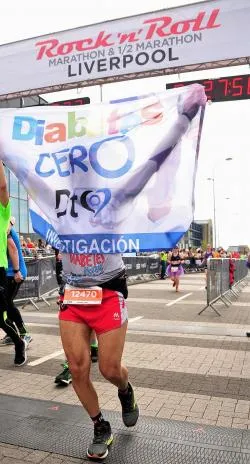Tina lives in Copenhagen, is 48 years old and was diagnosed with type 1 diabetes to six, so she lives with the disease since 1968, when her mother injected her every day the insulin she needed with a glass syringe.
"I still remember the smell of alcohol in which the syringes were kept to avoid infections, at that time it was very difficult to live with diabetes," said Tina, who participated in the International Diabetes Meeting that was recently held in Copenhagen, Denmark, and to whichTélam agreed as the only Argentine medium.
The woman commented that when she was a girl "she had a very strict diet", because the long -term insulin injection that applied forced her to always eat at the same schedules.
“Injecting 42 years ago is not the same as doing it now: the long -term insulin that placed me every morning made my breakfast at 7, lunch at 12 and dinner every day at 18. He was a slave of theDiabetes, ”he recalled with regret.
Tina said that "in general people do not understand what it means to be diabetic: for a person with diabetes it was complicated even traveling to other countries, since the time change caused mismatches on applications and that had an impact on health."
“Luckily in the 80s the quick action insulin was invented and there my life changed completely.While I had to injepe from five to six times per day, I could make the meals schedules more flexible and go to lunch with a friend at 14, for example, something I had never been able to do, ”he recalled.
For tub projects such as studying, marrying or having children were almost impossible: “When I was little I thought I could not make a normal life, that I could not study a career or have children.But thanks to the advances in medicine I could do my career in economics and I have two wonderful children, objectives that until not long ago were difficult to achieve for a person with type 1 diabetes. ”
The woman, who currently uses an insulin bomb, said that living with diabetes today "is much easier."
“Today I have the insulin bomb and I no longer have to worry about the injections.While I must perform controls to maintain my levels in balance, I feel much freer and I can lead a life like that of anyone, ”he said.
And he completed: “I don't know how I survived diabetes and I don't understand how my family survived.More than 40 years ago being diagnosed with a chronic disease like this was almost insurmountable, but luckily today the perspectives are much better. ”
For Tina, awareness is a "very important" part when facing the disease, so he decided to share its history.
“When they invited me to the encounter I decided to come to share my experience so that people can identify and better understand what it is to live with diabetes.It is important to remember that in the case of type 2 diabetes there are many things that can be done to prevent it, such as performing physical activity and eating healthy, ”he said.
He added: "While there are factors such as the family history that we cannot modify, there are many others that we can work and the change depends on our own decisions."
"Bringing a healthy lifestyle is something we can choose and we must work," he called.





